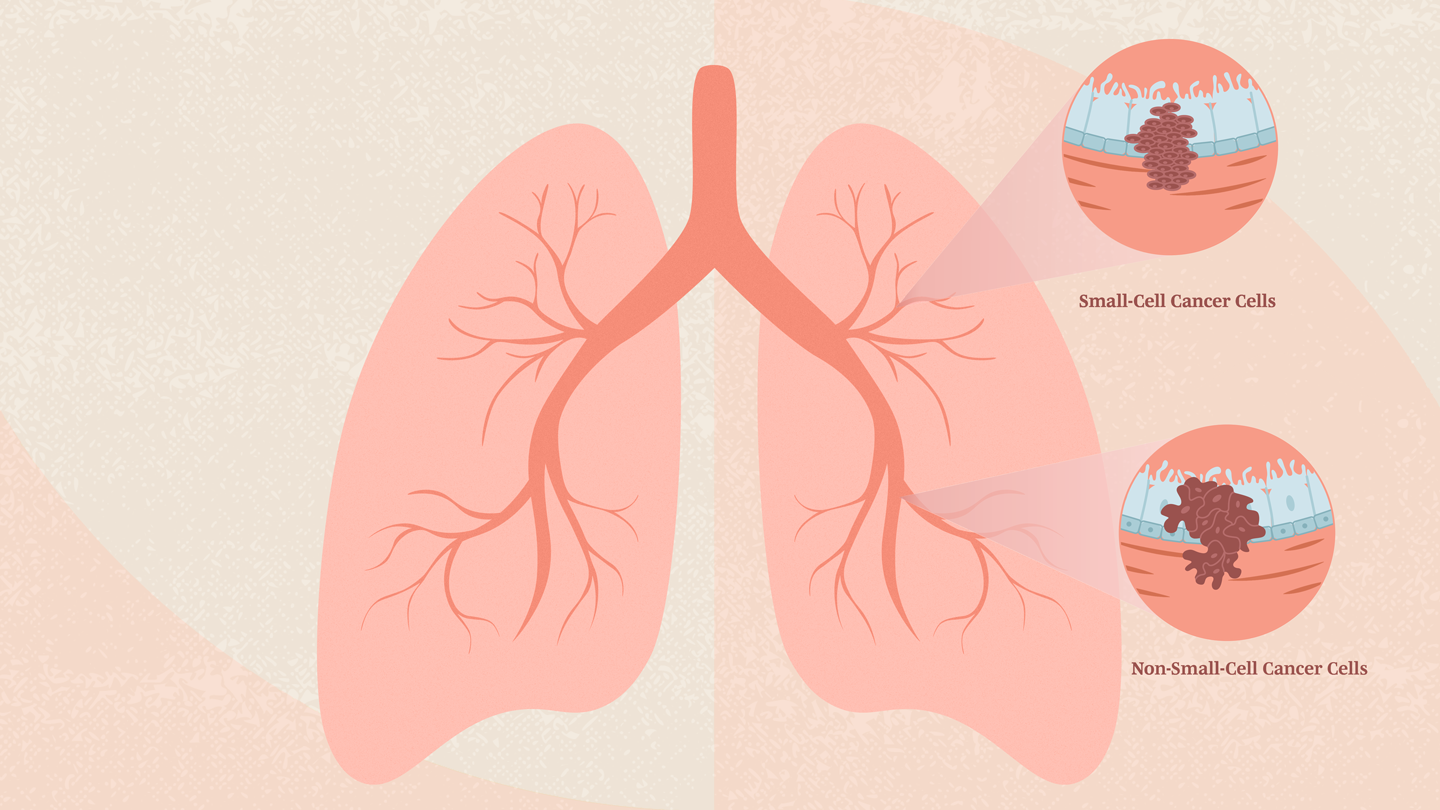Non-small cell lung cancer (NSCLC) is the most common type of lung cancer, accounting for 80 to 85 percent of all cases.
There are different subtypes of NSCLC, arising from different kinds of lung cells, but the ones most commonly diagnosed are:
- Adenocarcinoma
- Squamous cell carcinoma
- Large cell carcinoma
Adenocarcinoma
Adenocarcinoma represents about 30 percent of all lung cancers.
Adenocarcinoma typically:
- Develops in cells in the outer part of the lung that would normally secrete substances such as mucus.
- Occurs mostly in smokers, but it is also the most common lung cancer to affect nonsmokers.
- Is more prevalent in women than men.
- Is the type you’re most likely to be diagnosed with if you’re young and diagnosed with lung cancer.
- Tends to be diagnosed earlier than other kinds of lung cancers.
There’s a rare subset of adenocarcinoma that begins in the alveoli (the tiny air sacs in the lungs), called adenocarcinoma in situ (AIS), previously known as bronchioloalveolar carcinoma. AIS tumors account for about 3 percent of lung cancer diagnoses.
People with AIS tend to have a better prognosis (outlook) than those with other types of lung cancer.
Squamous Cell Carcinoma
About 30 percent of all lung cancers are squamous cell carcinomas. This type of lung cancer starts in the thin, flat cells that line the passages of the respiratory tract, most commonly in the central part of the lung, near a main airway.
Squamous cell carcinomas are linked to smoking.
Large Cell Carcinoma
Large cell carcinoma makes up about 9 percent of all lung cancers. This cancer can show up in any part of the lung. It usually grows and spreads rapidly, which makes treatment a challenge.
A type of large cell carcinoma, called large cell neuroendocrine carcinoma, is the fastest-growing NSCLC and has some of the same qualities as SCLC.
Other Subtypes of NSCLC
Other subtypes of NSCLC include adenosquamous carcinoma and sarcomatoid carcinoma. These are much less common forms of lung cancer.
Read the full article here




